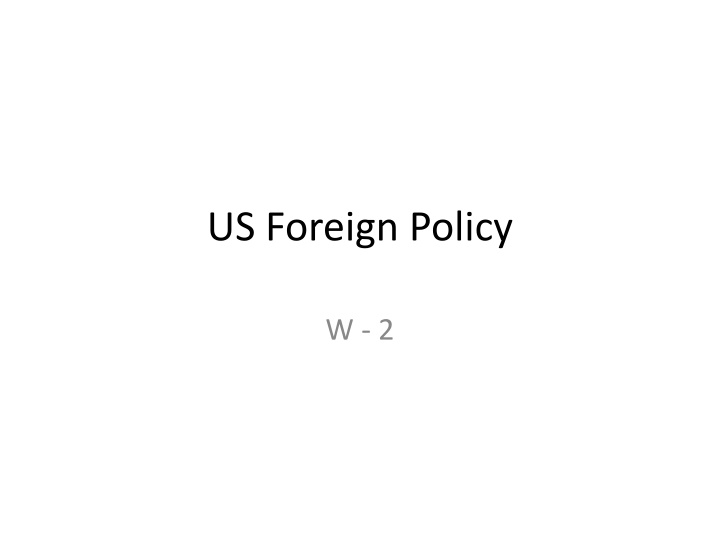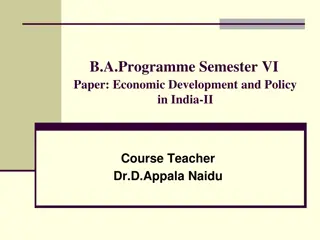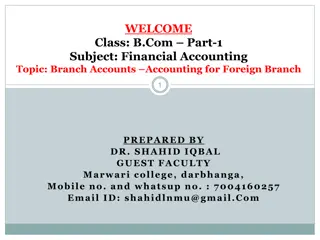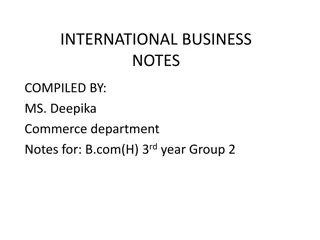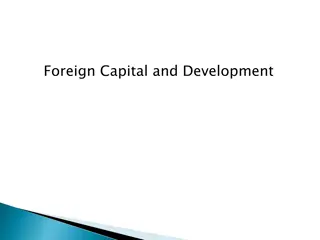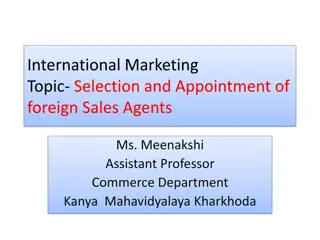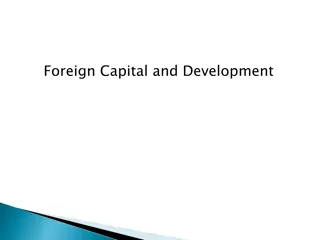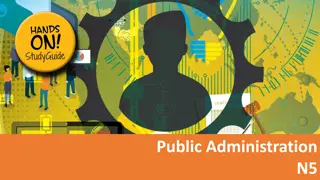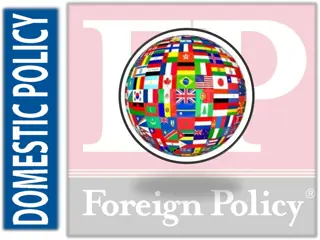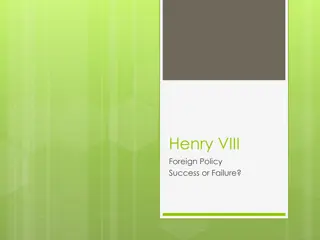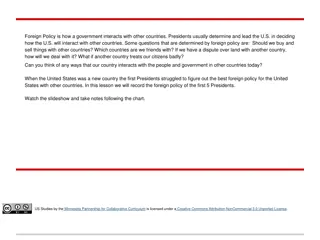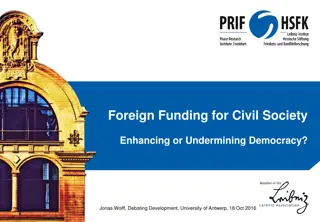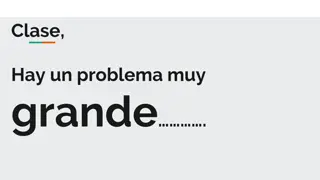Overview of US Foreign Policy Decision-Making Process
The US foreign policy decision-making process involves various actors and dynamics such as the President, Congress, interest groups, media, and public opinion. The Constitution outlines key provisions related to war powers, treaties, and appointments. The balance of power between the branches influences how decisions are made regarding international commitments. Different perspectives exist on war powers, with Presidentialists and Congressionalists holding contrasting views on the role of the President and Congress in declaring war. Overall, the process is shaped by cooperation, compromise, competition, and confrontation among these actors.
Download Presentation

Please find below an Image/Link to download the presentation.
The content on the website is provided AS IS for your information and personal use only. It may not be sold, licensed, or shared on other websites without obtaining consent from the author.If you encounter any issues during the download, it is possible that the publisher has removed the file from their server.
You are allowed to download the files provided on this website for personal or commercial use, subject to the condition that they are used lawfully. All files are the property of their respective owners.
The content on the website is provided AS IS for your information and personal use only. It may not be sold, licensed, or shared on other websites without obtaining consent from the author.
E N D
Presentation Transcript
US Foreign Policy W - 2
The domestic Context: FP Politics and the Process of Choice Politics stops at the water s edge (Arthur Vandenberg, 10-1-1945) For 3 reasons it is a myth: Exception to the rule Not always a good thing Domestic conflict not always a bad thing
Five groups of actors President and the Congress and Pennsylvania Avenue Diplomacy Politics and Decision-making within the executive branch Interests groups News media Public opinion
The President and the Congress and Pennsylvania Avenue Diplomacy 4 Patterns: Cooperation Constructive compromise Institutional competition confrontation
PAD The dynamic is structural: Not so much separation of powers But separate institutions sharing powers
Principal FP Provisions of the Constitution President Congress War Power Commander in chief of armed forces Provide for the common defense, declare war Treaties Negotiate treaties Ratification of treaties, by two-thirds majority (Senate) Appointments Nominate high-level government officials Confirm president s appointments (Senate) Foreign Commerce No explicit powers, but treaty negotiation and appointment powers pertain Explicit power to regulate foreign commerce General Powers Executive power, veto Legislative power, power of the purse, oversight and investigation
War Powers Presidentialists (Alexander Hamilton) Energetic government Congressionalists (James Madison) declare war
Treaties and other international commitments The President negotiates and he Senate ratifies (2/3) Other ways to influence treaties (Congress): observer groups Amendments, reservations Circumvent the Senate (President): Executive Agreements Declaratory Commitments
Appointments The President nominates, the Senate confirms (simple majority)
Commerce with Foreign Nations Congress regulates commerce with foreign nations Smoot-Hawley Tariff Act (1930) The Reciprocal Trade Agreements Act (1934) Pressure-diverting policy management system
Commerce: 5 key executive players USTR Secretary of the Treasury Secretary of Commerce State Department International Trade Commission
General Powers Executive Power, veto, pork barrel , bully pulpit Legislative Power: Substantive, Procedural The Supreme Court as referee? US v Curtiss-Wright (1936) Youngstown Sheet and Tube v Sawyer (1952) INS v Chadha (1983
Executive branch politics The executive branch has its own politics Presidents as FP Leaders Senior FP Advisers and Bureaucratic Politics
Interests Groups and their influence Type General examples Economic interest groups AFL-CIO (trade unions) National Association of Manufacturers Consumer Federation of America Major multinational corporations (MNCs) Identity groups Jewish Americans Cuban Americans Greek Americans African Americans Political issue groups Anti-Vietnam War movement Committee on the Present Danger Amnesty International Refugees International State and local governments Local Elected Officials for Social Responsibility, California World Trade Commission Foreign governments Washington Law firms, lobbyists, PR companies
The impact of the news media Agenda setting Shaping public opinion Influence directly on policy makers Freedom of the press vs. national security
